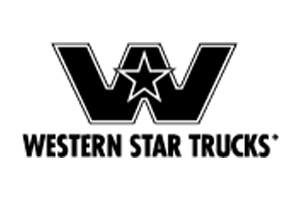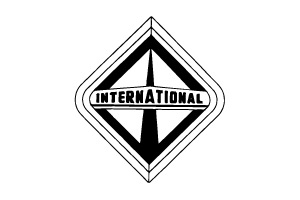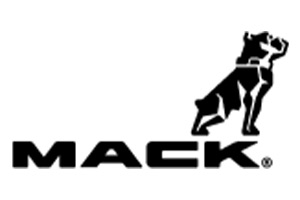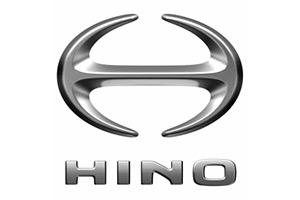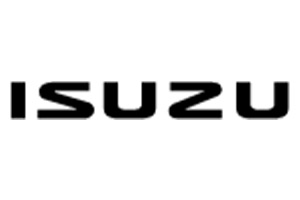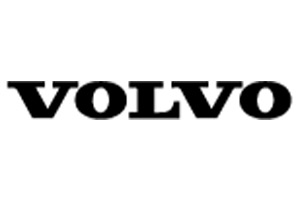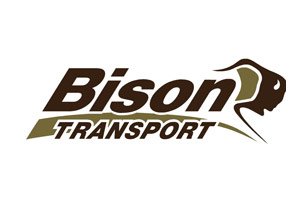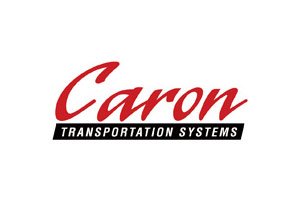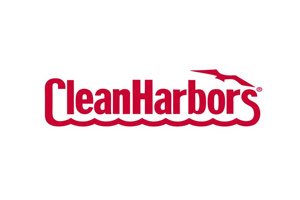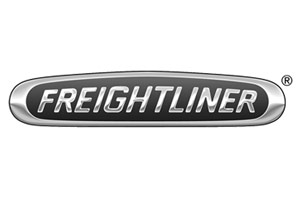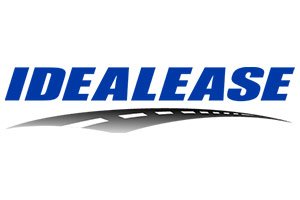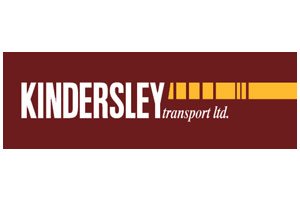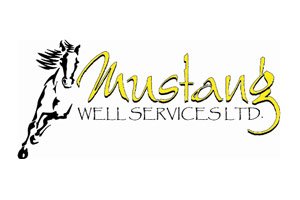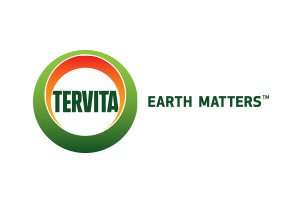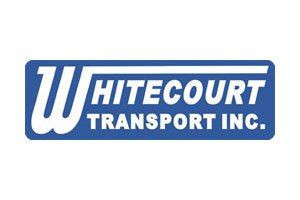Key Takeaways
-
CVIP inspections are government-mandated safety inspections done on all commercial vehicles under the CVIP umbrella to ensure vehicles are safe and compliant with provincial and national standards. Most significantly, they help to address potential hazards and accidents that might be caused by mechanical failures.
-
These inspections are only conducted by authorized professionals. And they inspect all key vehicle systems – brakes, tires, lights, engine – to make sure they’re in good working order.
-
Regular CVIP inspections are mandated for commercial vehicles including heavy-duty trucks, trailers, light trucks and buses. That’s a huge thing for operators, fleet managers, trucking companies.
-
Having regular CVIP inspections can increase vehicle reliability and safety. They further extend the life of commercial vehicles by facilitating proactive maintenance.
-
Failure to stay up to date with CVIP inspection schedules can result in substantial fines, legal penalties, elevated risks of liability, and harm to business reputations. Keeping track of compliance keeps things running more smoothly and helps ensure continued authority to operate.
-
By selecting a certified CVIP inspection facility with licensed technicians, you can help ensure your heavy vehicles are accurately evaluated and meet rigorous safety standards. Fleet managers will find these scheduling tips useful for making inspection processes more efficient.
A schedule for regular inspections required by the Commercial Vehicle Inspection Program. This schedule prevents vehicles lacking even basic safety and maintenance standards from being on the roads.
In Canada, these inspections are required by law for commercial vehicles such as trucks, trailers, and buses. The inspection schedule usually varies based on vehicle class and usage—annual or semi-annual inspections are standard mandates.
Routine periodic scheduling ensures compliance with provincial regulations and improves overall road safety for operators and the motoring public. Maintaining careful records of past inspections and future due dates is essential to prevent incurring costly penalties.
Properly planned preventative maintenance keeps vehicles in a state of good repair, preventing them from breaking down or requiring expensive repairs. Knowing your CVIP inspection schedule helps you operate efficiently and ensure your vehicles are reliable for the long haul.
What Is CVIP Inspection
A CVIP inspection (Commercial Vehicle Inspection Program) is a detailed inspection. This required inspection helps to make sure that all commercial vehicles are held to high safety standards. Inspections are increasingly important for maintaining the best-performing vehicles.
Not only do they protect our most critical infrastructure, they protect the safety of everyone on our roads. Conducted by certified inspectors, they look for developing mechanical problems before they cause an accident or a breakdown.
1. Definition of CVIP Inspection
The primary purpose of the CVIP inspection is to ensure that all vehicles are in compliance with minimum safety standards. By identifying mechanical issues before they become dangerous, these inspections prevent accidents due to system failure from occurring in the first place.
Routine inspections can greatly improve a vehicle’s longevity. They encourage smart, preventive maintenance that saves commercial operators expensive repairs down the road.
2. Purpose of CVIP Inspection
CVIP inspections are fundamental to the business of trucking companies, fleet operators, and other commercial enterprises. Saskatchewan law requires them on all commercial motor vehicles, including buses and tow trucks.
3. Who Requires CVIP Inspections
-
Heavy-duty trucks
-
Semi-trucks
-
Trailers
-
Light trucks
Importance of CVIP Inspections
The Commercial Vehicle Inspection Program (CVIP) is integral in making our roads safer. Moreover, it prevents commercial vehicles from becoming unsafe on our roadways. They are not an option — they are a government-mandated requirement created to fulfill provincial and national standards for safety.
These inspections are a proactive way to improve vehicle performance. They further protect businesses from legal and financial liabilities. Below, we explore their vital importance.
1. Ensuring Vehicle Safety Standards
Getting ahead of mechanical problems before they contribute to a breakdown or crash is why proactive CVIP inspections are so important. Regular inspection of brakes, tires and steering systems can ensure your vehicles are running safely and efficiently.
This proactive approach reduces the likelihood of roadside failures considerably. Research indicates that regular inspections are associated with lower accident rates, because vehicles are kept at a high level of safety. Taking action right away upon finding during inspections ensures the safety of drivers, passengers, and fellow road users.
2. Preventing Accidents and Failures
By catching hazards early, CVIP inspections greatly reduce risks associated with vehicle failure. For example, a minor engine problem identified during an inspection can save expensive repair costs and vehicle out-of-service time later.
Compliance is in the best interest of businesses, protecting them from possible lawsuits and enabling their operations to run without disruptions. This serves as proof of due diligence and it can strengthen your case while seeking insurance claims in case of any unforeseen events.
3. Reducing Liability Risks
Following CVIP inspection requirements protects companies from any potential fines or penalties. Failure to comply with inspection schedules may result in severe penalties, including halting of operations.
Frequent third-party inspections foster goodwill with regulators, keeping a company in good graces. They help prevent costly vehicle breakdowns that create operational disruptions, extending vehicle longevity while preventing surprise expenditures.
4. Maintaining Regulatory Compliance
|
Inspection Type |
Frequency |
|---|---|
|
Commercial Vehicles |
Annually (or semi-annually based on use) |
Public safety and vehicle efficiency depend on compliance with these standards. As many as 80% of vehicles can fail their first CVIP inspection – emphasizing the importance of routine maintenance.
Inspections go a step further, identifying underlying repairs, circumventing major breakdowns and even lowering insurance premiums by delivering concise damage reporting.
CVIP Inspection Schedule
The Commercial Vehicle Inspection Program (CVIP) requires large vehicles to undergo regular inspections to confirm they’re safe to be on the road. Whether you oversee one vehicle or many, knowing the inspection schedule will help you stay in compliance and keep your vehicles safe and roadworthy. Here are the most important things to note.
1. Annual and Semi-Annual Inspection Guidelines
Annual or semiannual CVIP inspections are required, depending on vehicle type. Trucks, trailers, and buses primarily used to move goods or people often require six-month inspections. For instance, a tractor-trailer used in interprovincial freight delivery would need to be inspected every six months.
Vehicles with lower usage or less risk, like smaller commercial vans, may only need annual inspections. These schedules make sure every key component—brakes, tires, lighting—are regularly inspected. Routine compliance avoids expensive disruptions and promotes safety on our highways.
2. Periodic Inspection Recommendations
In addition to required inspections, it’s a good idea to conduct periodic inspections to identify and mitigate any wear and tear. As an example, regular quarterly tire inspections can spot signs of uneven tread wear before a blowout can occur.
Just like that, regular brake system inspections and maintenance keep response times fast and safe. While the CVIP schedule sets the minimum, proactive maintenance tailored to your vehicle’s workload extends lifespan and minimizes unexpected repairs.
A vehicle operating in more severe conditions, such as the snowy roads of Alberta, can see an advantage with more frequent servicing.
3. Scheduling Tips for Fleet Managers
Fleet managers have their own set of challenges when trying to coordinate inspections for dozens or hundreds of vehicles. Start by making a digital calendar that monitors scheduled due dates for all vehicles.
Map out group inspections by area to maximize travel and service efficiency. For instance, book inspections for all trucks at a given service center on the same day to maximize efficiency.
Plan to make appointments well in advance of busy travel seasons to prevent back-ups. Partnering with certified CVIP facilities will help your company complete inspections more efficiently and correctly.
4. Exemptions from Scheduled Inspections
Some vehicles are not required to go through CVIP. For instance, vehicles for personal use or vehicles weighing less than a certain weight threshold are exempt from these inspections.
Knowing which exemptions apply will help you avoid unnecessary time and effort. Even exempt vehicles are better off with voluntary inspections to ensure the safety of drivers and passengers.
Please consult local regulations to confirm exemptions, as requirements may differ by jurisdiction and vehicle operation.
Key Components of a CVIP Inspection
The Commercial Vehicle Inspection Program (CVIP) is a detailed, multifaceted, and important process. It helps to keep unsafe commercial vehicles off the road and promotes a fair and competitive vehicle industry. Safety inspections are an important component of all commercial vehicles over 4,500 kilograms and buses with more than ten seats.
They inspect all major systems and structures, as per Canadian Standards. Here are the key components checked during a CVIP.
1. Brake System and Suspension Check
The entire brake system is looked at, including wear, leaks, and general braking performance. This goes for brake pads, lines, and air systems – everything necessary for a clean stop.
The suspension is inspected for stability and uniformity, with special attention paid to the springs, shocks, and mounts to ensure safety while on the road. For instance, a truck carrying very heavy loads would require stricter suspension to eliminate potentially hazardous swaying or bouncing.
2. Lights and Electrical Systems Review
All headlights, brake lights, turn signals and associated wiring must work. Broken lights can impact visibility and lead to tickets.
Inspectors look at the dashboard indicator lights, like a pre-trip, and do auxiliary systems checks, making sure there is no electrical failure.
3. Tires, Wheels, and Axles Assessment
Tires are examined for appropriate tread depth and any signs of damage. Wheels must be clear of cracks or loose wheel bolts.
Axles are tested to make sure they are aligned and able to bear the load. Or a driver that ignores uneven tire wear could end up with a damaged axle.
4. Engine and Emission System Examination
Engines are inspected for leaks, performance, and emissions compliance. Meeting Canada’s Environmental Enforcement Act standards is not optional, as non-compliance can result in criminal fines or imprisonment.
Having the engine running at its best saves money by lowering the cost to operate.
5. Cargo Securement and Load Safety
Inspectors check load securement to make sure the cargo is properly restrained to the vehicle so it doesn’t shift while in transit. Proper load distribution is especially important for vehicle stability and balance.
An insecure load may risk tipping over, falling or causing an accident.
Risks of Non-Compliance with CVIP
CVIP compliance is not just a legal formality. It is fundamental to ensuring safety, increasing efficiency, and fostering public trust in transportation operations. Not only does failure to comply with these inspections leave drivers exposed to dangerous conditions, the consequences of non-compliance can be costly to drivers and businesses alike.
1. Legal Penalties and Fines
Failure to comply with CVIP inspections can lead to harsh legal consequences. Section 19 of the Vehicle Inspection Regulations makes it clear that you cannot operate a commercial vehicle without passing a CVIP inspection. Not doing so can lead to fines up to $20,000.
For instance, if your truck is found on a highway with damaged components like worn brake pads or faulty lights, authorities can issue fines or even suspend operations until repairs align with safety guidelines. These steps highlight the legal requirement for regular, timely inspections to prevent expensive fines and help keep your fleet aligned with government-required standards.
2. Vehicle Downtime and Operational Delays
Overlooking CVIP requirements can result in unintended downtime. Undetected problems like structural damage or badly worn components can stop operations dead when repair becomes unavoidable. Such as intra-provincially traveling vehicles, such as semi-trailers or light trucks, which would experience new, unplanned, costly delays from inspection failures.
By catching issues before they become major problems, regular CVIP checks prevent more significant disruptions and keep your fleet operating at its best. Preventive maintenance doesn’t just save your fleet time, it helps shield your business from the risks of non-compliance CVIP and operational delays.
3. Increased Accident Liability
Safety risks are nearly doubled when vehicles are on the road without CVIP clearance. Worn brake pads or other easily avoidable problems can cause an accident, potentially leaving businesses responsible for the damages. Regular inspections help identify serious underlying issues before they lead to dangerous accidents.
Additionally, compliance puts you in a stronger position with insurers – vehicles that comply with safety standards are more insurable, and with better terms.
4. Damage to Business Reputation
Letting your CVIP compliance slide can damage your business’s reputation. Customers and partners are more reluctant to work with a company that doesn’t take regulatory obligations seriously. If one of their fleet vehicles gets into an accident due to non-compliance with safety regulations, it damages that company’s reputation.
This shows the company’s utter indifference to safety. Consistent inspections communicate professionalism and reliability, building trust and long-term business relationships.
Daily Inspection Procedures for Drivers
Daily inspections are an important vehicle safety and reliability procedure. This proactive approach to maintenance prevents them from developing into bigger problems down the road. It ensures all vehicles are CVIP compliant, reducing the risk of costly downtime.
1. Steps to Conduct Daily Inspections
A systematic approach to vehicle inspection will ensure that drivers conduct complete and comprehensive inspections. Begin with a proper pre-trip inspection. Inspect for any preventable visible signs of damage, including cracked mirrors or worn tires and a vehicle is not road-ready.
Continue on to testing critical systems, lights, brakes, and horn functions. Check fluid levels, including engine oil, coolant, and windshield washer fluid. Finally, ensure that safety gear including fire extinguishers and reflective triangles are available and in working order.
2. Identifying Common Issues Early
Common issues found are under-inflated tires, leaks of any kind, broken, inoperable or burned-out lights. Being able to identify uneven tire wear early can help avoid blowouts.
Being able to catch a brake fluid leak early on can save your organization from expensive repairs. Being proactive by finding these issues during inspections allows for a longer vehicle life and a safer vehicle to be on the road.
3. Reporting and Addressing Defects
Once a defect is discovered it should be documented right away, either on traditional forms or digital tablets. By establishing clear lines of communication with maintenance teams, swift action can be taken.
A small chip in your windshield may require only a simple repair. When a braking system has been compromised, it’s important to address it right away to avoid potential downtime.
Common Reasons for Failed Inspections
CVIP failures are usually due to preventable maintenance concerns. Taking a closer look at these frequent issues will save you time and money with costly re-inspections and ensure your project is in compliance.
1. Faulty Brake Systems or Components
Brakes are by far the most important component of vehicle safety. They are one of the three main focuses during a CVIP inspection. Whether it’s a simple fix, such as worn brake pads, or something more serious, such as leaking air systems or misaligned components, failure can occur.
Take, for example, air brakes, which rely on pressurized systems. Any leaks greatly diminish their stopping power. Conducting regular inspections to ensure brake response, lining wear, air pressure stability, and more can prevent catastrophes from occurring.
2. Worn Tires or Improper Axle Alignment
Tires with low tread depth, uneven wear, or improper inflation threaten safety and fuel economy. Canadian regulations mandate a minimum tread depth of 1.5 mm.
If axles are bent or misaligned, tires may wear abnormally, so checking alignment is key to a long life for any vehicle.
3. Inadequate Cargo Securement Practices
Cargo not properly secured is a serious safety hazard and violates inspection failure from improper cargo securement. Making sure that straps, chains, tie-downs, and anchor points are in line with industry standards stops loads from shifting while in-transit.
4. Non-Functional Lights or Signals
Lighting systems are essential for safe roadway environments. Loose wiring, blown bulbs, or leaks in the electrical system are common causes of failure.
Looking at signal functionality, headlight brightness, and reflector visibility in a post inspection tackles these problems.
Choosing a Certified CVIP Facility
Choosing the facility that will conduct your CVIP (Commercial Vehicle Inspection Program) inspection is an important decision. It helps you avoid safety violations and inspection failures, and helps you keep your fleet more reliable. By choosing a certified CVIP facility, you ensure that your vehicle is up to all government-required standards and you’re doing your part to foster a safer driving environment.
Below, we explain the most important things to look out for.
1. Importance of Licensed Technicians
Facilities certified by CVIP can be by the state of Colorado licensed technicians. The trained to conduct thorough inspections. These experts have a detailed understanding of the Vehicle Inspection Regulation (AR 211/206).
They use the Facility Operating Manual to guide them so they don’t miss anything. Our licensed technicians are always equipped to handle the precise job. They’re equipped to test anything from commercial trucks over 4,500 kg to passenger buses that require bi-annual inspections.
Their specialized knowledge helps keep you in line with complicated government mandates, minimizing penalties and potential days out of operation.
2. Features of Reliable Inspection Facilities
A CVIP facility you can trust should display a current inspection license. This license must be renewed every two years, enabling them to inspect commercial, salvage, and out-of-province vehicles.
These facilities are fully committed to maintaining rigorous standards for equipment and premises, as described in the Ready for Pre-Licensing Verification Checklist. Many even offer online booking, so you can book an appointment right from your smartphone or laptop.
Making appointments well in advance is especially helpful in securing access to the best quality services and preventing backlogs during peak times.
3. Understanding CVIP Inspection Fees
Fees for inspection vary based on vehicle type and weight. Facilities determine their fees based on the complexity of the inspection.
Where inspections are of complex vehicles such as trailers, trucks, or combination vehicles above 4,500 kg, the cost will be higher to account for that complexity. Fees might vary, but working with a certified facility means you can count on all inspections being done accurately with a focus on safety and compliance.
With 90% of commercial vehicles inspected at least annually, selecting a certified facility makes compliance easy and keeps businesses on the right side of regulations.
Best Practices for Fleet Managers
There’s a lot more to managing an effective fleet than just scheduling vehicles to go through Commercial Vehicle Inspection Program (CVIP) checks. A proactive approach can help you stay in compliance, cut costs, and increase overall efficiency.
By shifting their focus to preventive maintenance, fleet managers can greatly improve operational efficiency and safety. They do this by outfitting drivers and training them extensively, while keeping thorough documentation.
1. Implementing Preventive Maintenance Plans
A solid preventive maintenance plan is key to ensuring vehicles stay in the best shape possible. Preventive maintenance like regular oil changes, brake inspections, and tire rotations go a long way in helping to keep your fleet running smooth.
In addition, they keep you from incurring costly repairs in the future. For example, if brake maintenance is overlooked, it may result in larger problems that ground a vehicle for days.
Fleet management software streamlines this process and automatically notifies you when it’s time to complete a task, so you never miss a beat. These tools offer data-driven insights, allowing managers to pinpoint trends and make scheduling changes in advance.
2. Training Drivers on Inspection Protocols
Drivers are the backbone of any fleet’s safety program. Training them to run daily inspections helps you identify problems before they become a hazard.
Urge drivers to inspect tire pressure, tread depth, fluid levels, and dashboard warning lights before each trip. Providing clear, standardized checklists can make this process more efficient fleet-wide.
For instance, if you have a pre-trip inspection checklist, it can serve as a reminder for drivers to check their mirrors, wipers, and lights so nothing is forgotten. Encouraging prompt reporting of any safety concerns or maintenance issues means maintenance teams can act fast to rectify problems, reducing downtime.
3. Keeping Accurate Maintenance Records
More than anything, specific records are the silver bullet when it comes to dealing with CVIP inspections and routine maintenance. Documenting all repairs, inspections, and replacements create an easy reference with tangible proof that regulatory requirements have been met and a comprehensive record of each vehicle’s lifespan.
Fleet management software can help you centralize this data, providing your team with real-time access to key information, including mileage, inspection dates, and maintenance schedules.
This initiative furthers improved data-driven decision-making while helping to accelerate the CVIP process by allowing inspectors to quickly review an operator’s records. If a vehicle requires additional inspection due to its age or mileage, having thorough records can help expedite the process.
It helps to have those records available.
Conclusion
Create an inspection schedule Regular inspections keep your drivers and everyone else on the road safe while helping you avoid costly fines or downtime. Establishing daily inspection routines and adopting best practices lead to safer operations and fewer unwelcome surprises. Picking a certified facility is a big step in the right direction, providing assurance that the job is done safely and correctly.
Fleet managers that put an emphasis on inspections are saving time and money over the life of their fleet. It allows you to identify issues earlier and develop a repair program before they become more costly. With a consistent inspection schedule and the right preparations, inspections can be less stressful and more clear cut.
Keep your fleet healthy and moving down the road. Begin now by taking stock of what you’re doing and what you need to do to improve save our streets. Believing in others pays off.
Frequently Asked Questions
What is a CVIP inspection?
A CVIP (Commercial Vehicle Inspection Program) inspection is a required safety inspection done on commercial vehicles across Canada. It provides assurance that those vehicles are in full compliance with national safety standards and continuing to operate safely on our nation’s highways.
How often should CVIP inspections be scheduled?
Commercial vehicles are required to have a CVIP inspection every 6 or 12 months. The frequency varies based on the type of vehicle and the province’s regulations. Consistent routine scheduling avoids complaints and restores public confidence.
Why are CVIP inspections important?
CVIP inspections reduce crashes, enhance safety on our roads, and protect businesses from expensive out-of-service fines. Beyond just the emissions aspect, they keep CVs safe, reliable, and ready for commercial use.
What happens if I fail to comply with CVIP requirements?
Fines, penalties, and costly downtime for your fleet are an unwanted consequence of non-compliance. It can further raise liability exposure and endanger driver and public safety.
What are the common reasons for failed CVIP inspections?
Common violations are brake failure, worn tires, inoperative lights and leaks of hazardous materials. Preventing failure through proper maintenance and pre-trip inspection is imperative.
How can I find a certified CVIP facility?
Find a licensed CVIP inspection facility near you. Make sure the shop is certified, experienced and properly equipped to work on your vehicle type and needs.
What are the benefits of following a CVIP inspection schedule?
Maintaining a regular CVIP inspection schedule will keep you compliant, lower the risk of breakdowns, and prolong the life of your vehicle. It saves lives, makes operations safer, and increases fleet efficiency.

